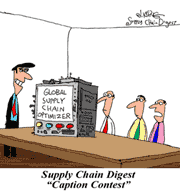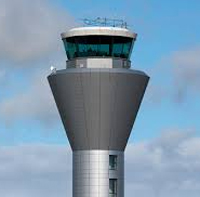 |
November 10, 2017 - Supply Chain Flagship Newsletter |
 |
|
 |
|
|||||||||||||||||||||||||||||||||||||||||||||||||||||||||||||||||||||||
|
||||||||||||||||||||||||||||||||||||||||||||||||||||||||||||||||||||||||
|
|
|
YOUR FEEDBACK
This week, more of the emails, some from our content partner RetailWire, stemming from on our OnTarget piece on the growing trend of people having RFID chips implanted in their hands to automate/control various actions, in a movement some call "transhumanis."
Feedback on Implantable RFID Chips
![]()
Really? Too, too, too creepy.
Paula Rosenblum
Managing Partner
RSR Research

![]()
With the current workforce, I don't see employees sacrificing their privacy for convenience, however for the younger generations coming into the workforce I could see this catching on. I'm always amazed at how easily teens give away personal information (email, age, sex, hobbies, address) at events for a free t-shirt or sunglasses. As the world becomes more digital the younger generations will be much more accepting.
Seth Nagle
RW3

![]()
I'm one of those people that would consider being "chipped" if it made my life better. My only concern is putting a foreign object into my body. However this type of chip is different. This is about making life at work easier. A wave of the hand or other type of gesture and "stuff" happens.
I always thought the smartphone would be the ultimate in creating automated convenience. Open up the app, click on something and again, stuff happens. This chip eliminates the phone. But, at what point does the level of ease not make any difference? I think we are at the point with technology that we can create an almost transhuman experience. Now how can we use this most effectively?
Shep Hyken
Chief Amazement Officer
Shepard Presentations

![]()
We can't stop technology and no one knows how far it will go. I see this as something in the future, but not within the next few years, most likely decades. First, the technology needs to be perfect. Second, we need to have numerous tests determining if there will be any long-term side effects that could cause harm to the body. And third, the public has to want this technology and accept it. When asked about how retailers can benefit, I would say all employers could benefit - but will they be able to mandate their employees to get these implants? So many questions will need answering before we get there.
I think, for now, retailers need to focus more on where we are in 2017, and why so many stores lose sales because of poor service. They need to implement solutions that involve good old-fashioned human interaction and maybe in about 20 to 30 years we can look at implants as the next best thing.
Art Suriano
Chief Executive Officer
The TSi Company

SUPPLY CHAIN TRIVIA ANSWER
Q: What share of total US freight transportation spend goes to rail?
A: 8%, according to the 2017 State of Logistics Report from CSCMP.
| © SupplyChainDigest™ 2003-2017. All Rights Reserved. SupplyChainDigest PO Box 714 Springboro, Ohio 45066 |
POWERED BY: XDIMENSION
|







 The RVCF conference is a semi-private gathering, so I am not going to mention any participant companies by name.
The RVCF conference is a semi-private gathering, so I am not going to mention any participant companies by name.

